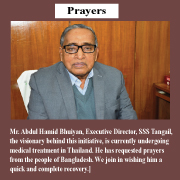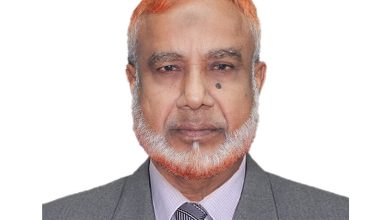Microfinance must go digital to stay relevant, says Nasefa Ali, Deputy Executive Director,-WAVE Foundation


Holiday Post Report: Bangladesh’s microfinance sector has long been celebrated as a global success story, a transformative force in poverty alleviation and economic empowerment.While acknowledging the country’s global leadership in microcredit, she insists the sector must radically transform to maintain its relevance in an increasingly digital financial landscape.
She explains that what started as a simple poverty tool is now a national economic engine. ‘We’ve moved past just giving loans. The focus is on holistic support—integrated financial services, long-term sustainability and scalable impact.’- says Nasefa Ali, the Deputy Executive Director of WAVE Foundation and has been watching this space closely for years.
She points out that over 30 million active borrowers are now linked with microfinance institutions. ‘That’s not a small number. It means we’re reaching people traditionally excluded by formal banking system.’She says this shows how microfinance remains vital, especially for the rural and informal sectors.
The sector’s contribution to agriculture and small and medium enterprises (SMEs) is particularly significant. In a country where agriculture still employs over 40% of the labor force and SMEs contribute nearly 25% to GDP, microfinance plays a critical enabling role by providing working capital, facilitating value chain development, and supporting climate-resilient farming practices. She adds that special attention must go to women-led initiatives. ‘When you give loans to women, you empower entire families. That’s not theory—it’s proven.’
Despite the success, challenges persist. Rising inflation, over-indebtedness in some regions, rising financial& operational cost and climate risks continue to strain the sector.‘We need to be more transparent, more responsible and more client-centric.’
Yet, the future holds immense promise. The future of microfinance is not simply about expanding reach but about deepening impact and ensuring long-term sustainability. At WAVE Foundation,we envision a future where financial literacy is widespread, products are meticulously tailored to individual needs and microfinance seamlessly integrates with other vital development sectors.
A pivotal element in this future is digital microfinance. This is more than just a technological upgrade; it’s a fundamental shift towards greater accessibility and efficiency.She describes how mobile banking, e-KYC, and digital wallets are already making things faster and safer.This digital leap will bring financial services directly to the fingertips of our clients.At WAVE, we are actively exploring these avenues. We are investing in digital literacy programs for our staff and the communities we serve, piloting digital payment solutions, and exploring how AI can refine our outreach, risk management and impact measurement strategies.
In her view, partnerships are essential. ‘The government, MFIs, fintechs, and private sector—they must work togetherto build a sector that’s resilient, ethical and future-ready. Together, we can ensure that the next chapter of financial inclusion leaves no one behind.’
She says the sector is at a crossroads. “Either we upgrade, or we get outdated.”
But she ends with optimism. ‘Microfinance began here, and it can be reinvented here. WAVE Foundation is proud to be part of this transition—rooted in community, committed to innovation and driven by a vision of inclusive, equitable development.’
That’s how Nasefa Ali sees it—direct, grounded and forward-looking.





